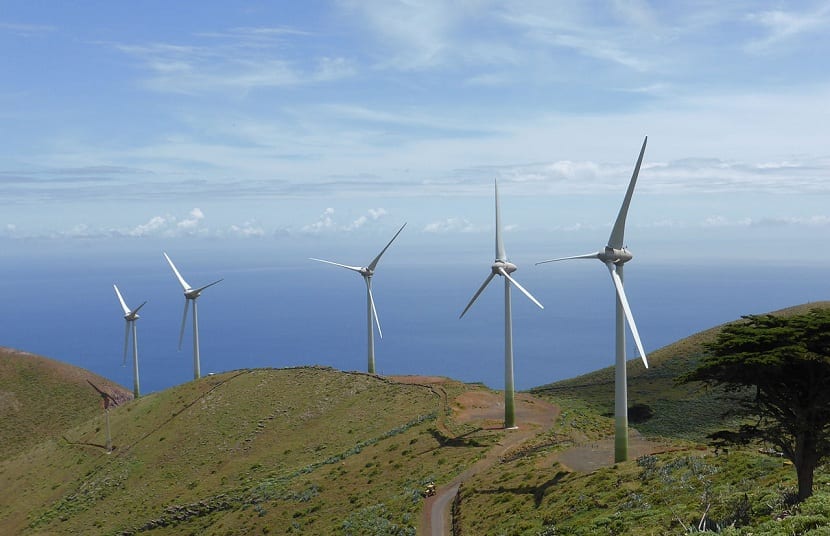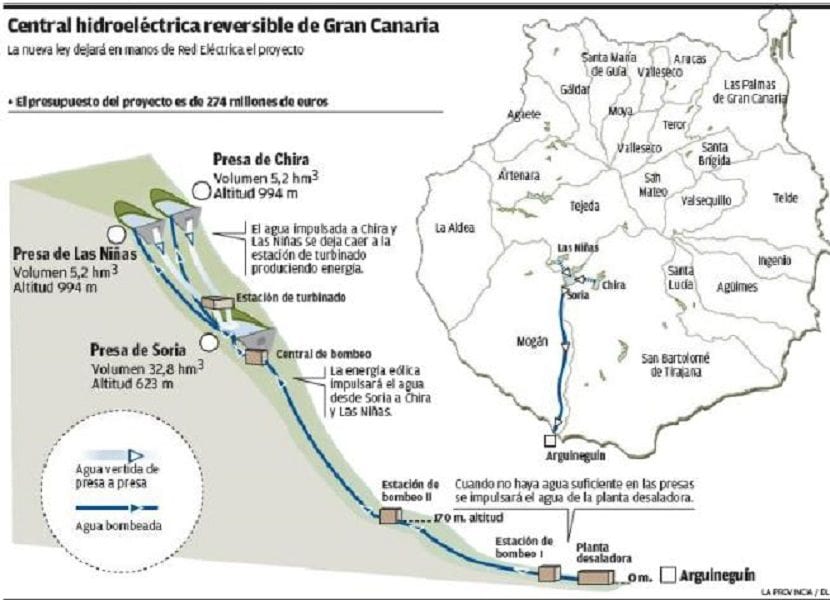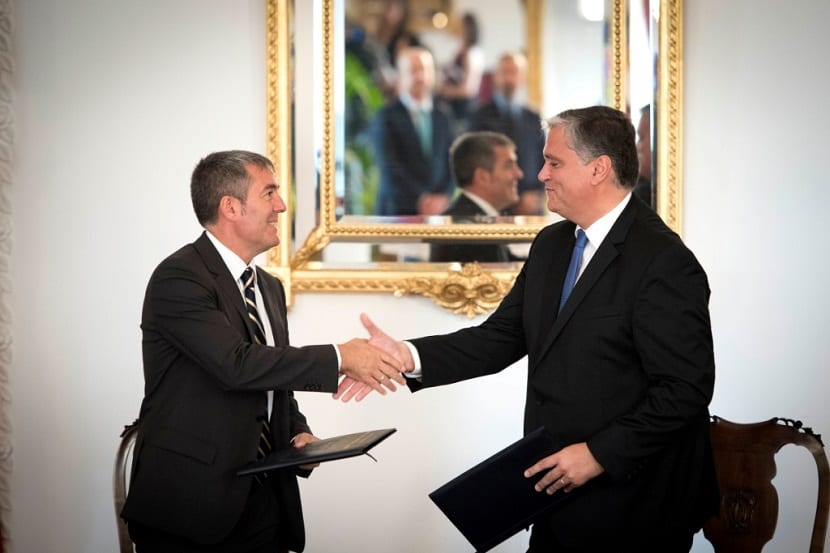
The presidents of the Azores, Vasco Alves Cordeiro, and of the Canary Islands, Fernando Clavijo, have signed a collaboration agreement in innovation, development and renewable energies, during the official visit of a Canarian delegation to the Portuguese archipelago.
The presidents of the different archipelagos discussed, among other matters, the Canarian presidency of the Conference of Presidents of the ORs (CPRUP), which begins at the end of October this year.
Clavijo has pointed out that the ORs are the clearest example of why a strong European Union that is committed to the development of the regions.
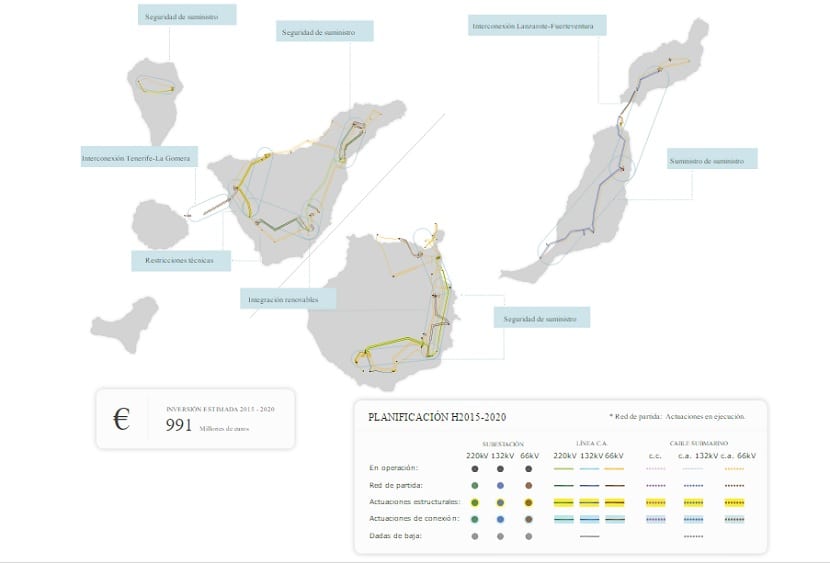
In this regard, Fernando Clavijo described the collaboration between both regions as «Intelligence"And stressed that the work of the Azores and the assumption of the Canarian presidency of the RUP Conference" will allow us to place ourselves in a key position for the future of the EU at a time like the present ", in the face of the new EU scenario after Brexit.
The Canarian president added that the Canarian presidency of the Outermost Regions It will coincide with the adoption by the European Commission of the next communication on the OR strategy.
During this official visit, both leaders have signed a memorandum of understanding in which they agree to “reinforce the coordination and synergy processes in the area of preparation for the next European Union programming period, in particular as regards cohesion policy '.
According to Clavijo, «We have agreed to start a joint work, not only to value the memorandum but also to strengthen the role of the outermost regions and lead within our member states a position regarding the negotiation of funds that will take place for the period after 2020 ″.
The document includes the need to «identify a set of areas where there is mutual interest and mutual will to deepen political relations bilateral strategic between the two regions', mainly as regards the integrated maritime policy of the European Union.
Research, development and innovation (R + D + i) tasks will also be carried out, within the framework of the Smart Specialization Strategies (RIS3) and the creation of the Atlantic International Research Center (AIR Center) on topics such as Renewable Energies; adaptation to climatic changes; the forest resources and spatial planning and mobility of young people.
Both presidents insisted on the need to «evaluate the necessary conditions and the possibilities available for a greater articulation in terms of transport systems, with the aim of boost complementarity between the respective tourism sectors, as well as promoting the export of goods from the two regions and the air and maritime routes between the archipelagos of Macaronesia and their connection to Africa, Europe and America ”.
The document includes the need to "strengthen cooperation" within the framework of participation in interregional cooperation organizations and in other international forums, mainly in the Conference of Presidents of Outermost Regions and in the Conference of the Peripheral and Maritime Regions of the European Union.
Political support and reciprocal technical coordination will also be strengthened in the participation of members of the Canary Islands and the Azores in the European Committee of the Regions, in order to consolidate an agenda common regional and European.
Both presidents agreed that Brexit has a decisive influence, since it has not yet been agreed whether the essential proposal, the new Multiannual Financial Framework (MFP), it will be discussed with the current European Parliament and the EC or if they will wait for their renewal (May 2019), that is, with the United Kingdom in the institutions or outside them.
Fernando Clavijo indicated that “the European Commission seems to choose to promote negotiations as soon as possible so as not to delay the start of the next programming period, but we will have to wait until the State of the Union Debate is held this month to have conclusive information.
The Canarian president assured that “the 2017-2018 presidency period will be fundamental to be able to reinforce and deepen the messages for the next period, even more so when the RUP communication will not be able to assume commitments concrete and firm but to express a mere expectation of evolution and proposal ».
Canary is changing model
The efficiency of the electricity sector is one of the biggest battlegrounds for the companies, public institutions and citizens. In most cases, the solution is not to have more or fewer resources, but to manage in a more efficient those already available.
And the reasons are basically two: the first, the economic, so that energy development does not end up causing a financial extra cost and that in the end we have to pay for it as usual. And in second place, the environmental, minimize the impact on nature.
Because of all this, public administrations are committed to developing an economical and sustainable energy model. But from saying to fact there is a long way to go, and the goal is not always achieved.
The three problems of the Canary Islands energy model (and their solutions)
One of the best examples of positive change is Canary Islands, an archipelago that, due to its own idiosyncrasy, has historically carried an energy model that has created not only a criticized dependence on the rest of Spain, but also the permanence in some obsolete and unsustainable dynamics.
The problems of the Canary Islands energy model can be summarized in three factors: the geographic isolation of the area itself, excessive dependence on oil and the extra costs for the electrical system.
From geographic isolation ... to interconnection
The truth is that the biggest problem facing the Canary Islands is not a voluntary or deserved factor, but belongs to its own idiosyncrasy. It is none other than its geographical isolation, since it is more than 2.000 kilometers from the Peninsula, an insurmountable distance in many ways.
And it is that, just as many autonomous communities can take advantage of the territorial union at the national level to share infrastructures and connections, in the Islands it is practically an oasis that depends on itself. In fact, the Canary Islands electrical system has six subsystems, which are electrically isolated and which are minuscule in size compared to the peninsular ones.
The Canary Islands are forced to have six electrical subsystems that are not even interconnected.
The consequence of this lack of connection is very damaging: each island of the archipelago needs to recreate in its subsystem a network equivalent to the national one in terms of infrastructure and energy production, with the multiplication of efforts and structures that this entails.
The solution to this problem is the development of a new energy model to which Red Eléctrica de España contributes with its commitment to improve the connection between the islands and the grid mesh, which will facilitate a greater integration of renewable energies. To begin with, and since 2011, the company is carrying out the Network Asset Improvement project (MAR Project) for optimize and guarantee the security of electricity supply in the islands, something that did not happen before.

From oil ... to renewable energies
It is another of the great problems of the archipelago. According to Red Eléctrica, «electrical energy in the Canary Islands is generated with 92% of fossil petroleum products and only 8% from renewable sources, which translates into an electrical system that is highly dependent on the outside, expensive and polluting.
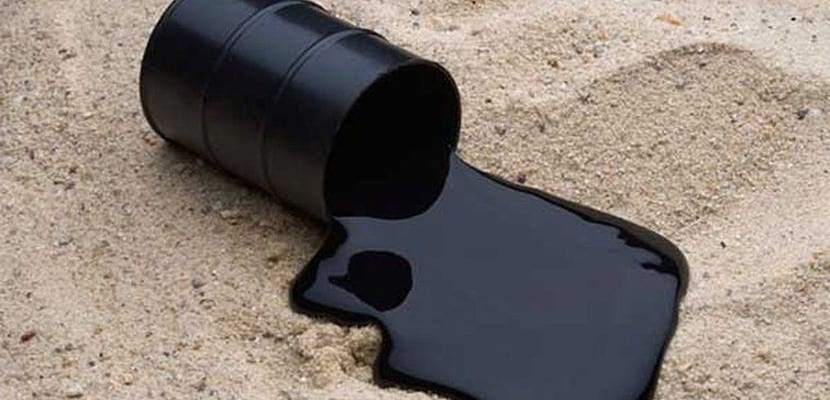
Given the historical and social demand that the Canary Islands rush to change its energy model, Red Eléctrica tries to contribute to its transformation towards "efficiency and sustainability" (he will surely get paid sooner or later).
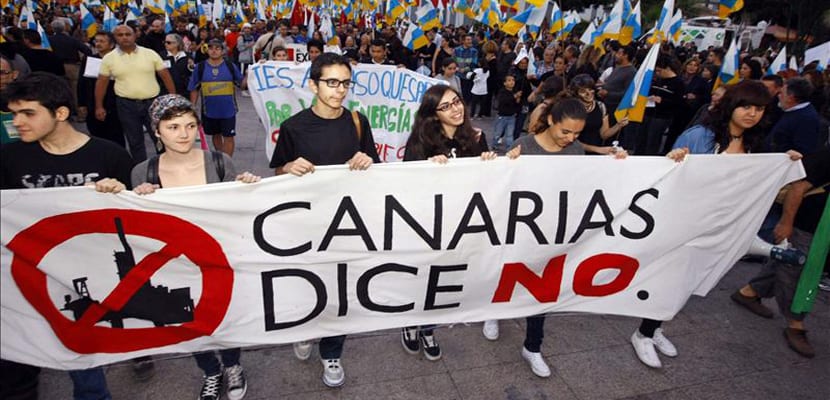
Among other initiatives, the company has carried out in Lanzarote an R & D & I project unprecedented in Spain: based on a system that uses the technology of flywheel which helps to stabilize the frequency and voltage of the Fuerteventura-Lanzarote electrical system and, as a consequence, to integrate more renewable energy.
In this objective, we find another of the great projects of Red Eléctrica in the Canary Islands: the development of the Soria-Chira reversible hydraulic power plant, to be used as an energy storage tool by the electrical system operator.
With a planned investment of 320 million euros, «the project will adapt a plant initially designed for generation to its new function as a system operator tool that will guarantee the electricity supply, improve the system's safety and optimize the integration of renewable energies in Gran Canarito".
From economic independence ... to financial autonomy
Both the absence of connection between islands and the dependence on oil have a negative consequence: the production of electrical energy becomes economically unviable.
And, as recognized by a study co-financed by the Government itself, producing energy in the Canary Islands is between three and four times more expensive than doing it in the rest of Spain. In addition, according to Electric Network, dependence on fossil materials' produces an extra cost of about 1.200 million euros per year for the entire electrical system ”. For this reason, the national Executive ended up subsidizing these extra costs via taxes. In other words, all Spaniards ended up paying for the endemic problem of the Canary Islands.
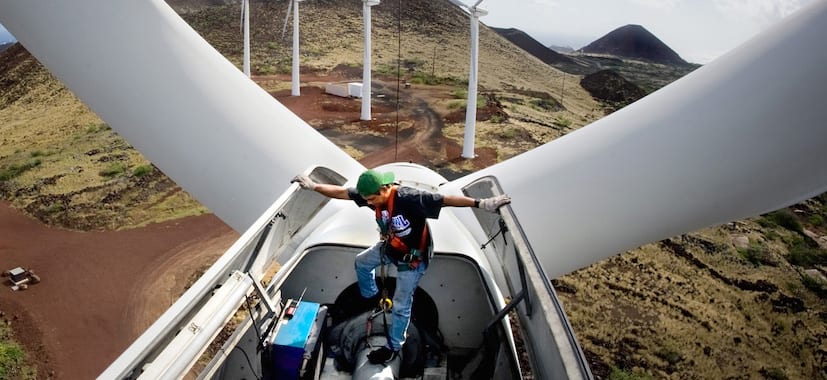
All these initiatives intend that the Canary Islands go assuming your own model, self-managed, environmentally sustainable and that, of course, depends less and less on the funding from the central government.
